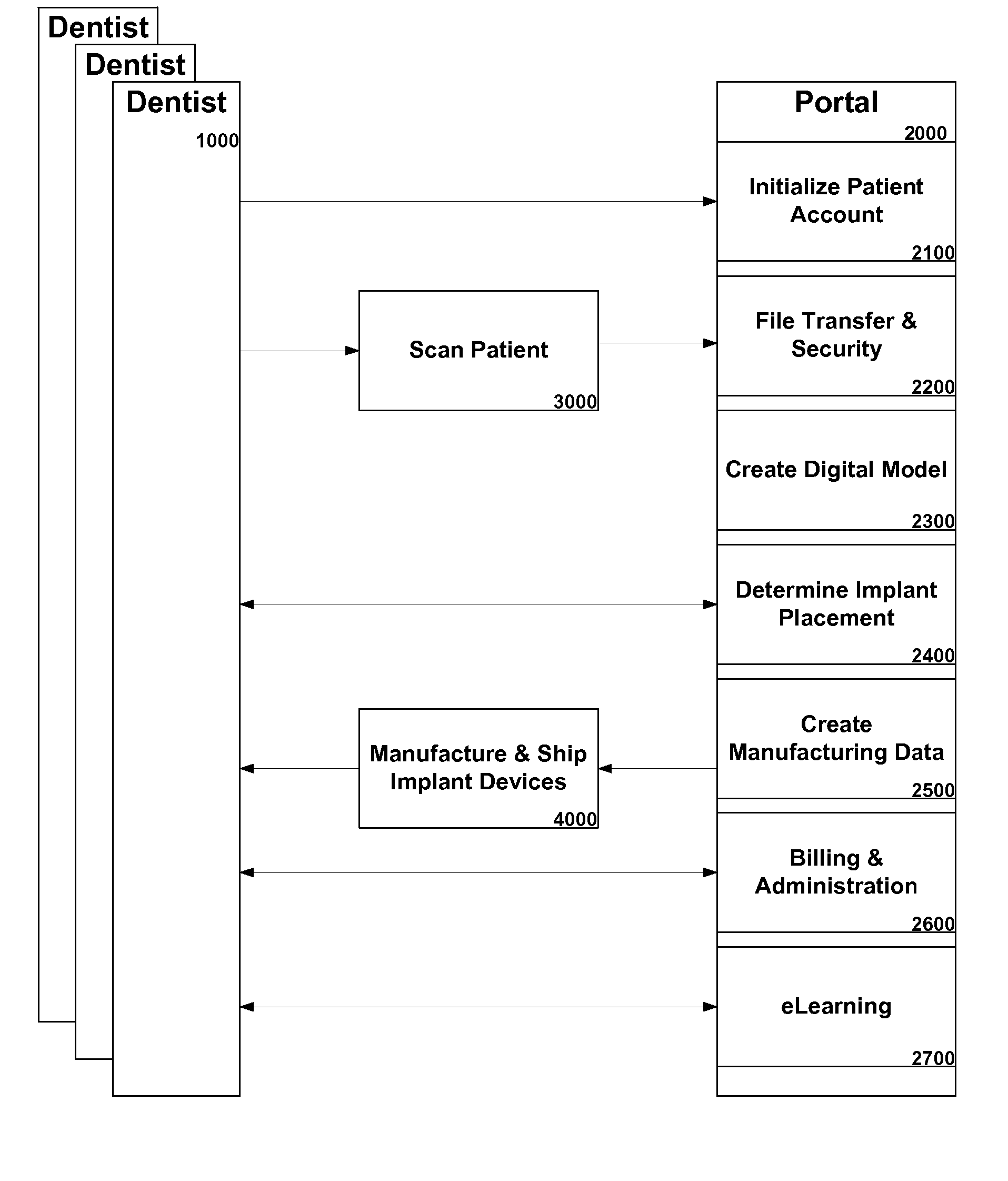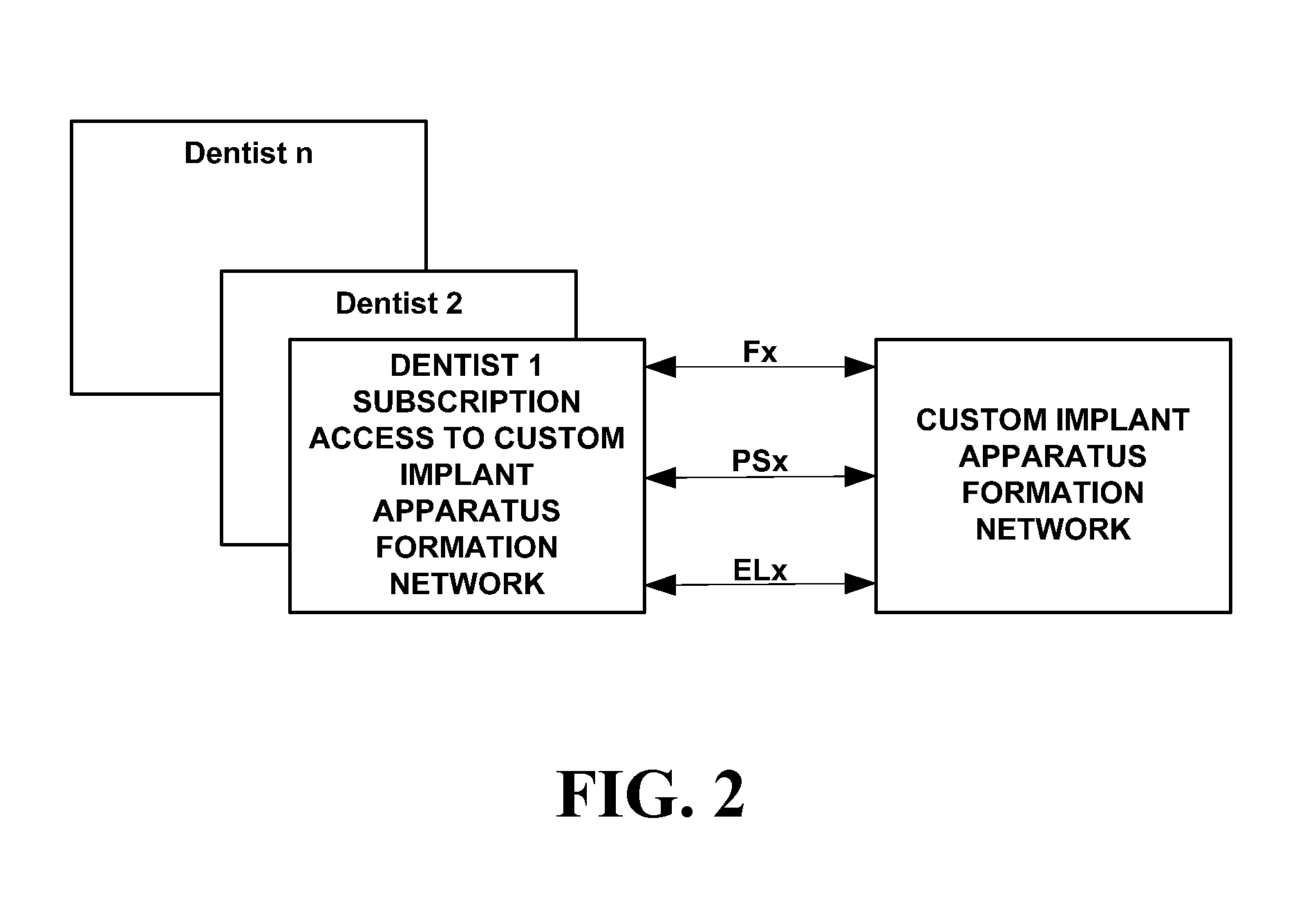System & method for the design, creation and installation of implant-supported dental prostheses
a dental prosthesis and implant technology, applied in the field of system & method for the design, creation and installation of implant-supported dental prostheses, can solve the problems of unsatisfactory information revealed by conventional two-dimensional x-ray images, unaided manual preparation of the jaw for implants, and the inability to serve as a platform for traditional dental prosthetics. achieve the effect of fast delivery of implant services to a patien
- Summary
- Abstract
- Description
- Claims
- Application Information
AI Technical Summary
Benefits of technology
Problems solved by technology
Method used
Image
Examples
Embodiment Construction
[0117] The present invention will now be described in detail with reference to a few preferred embodiments thereof as illustrated in the accompanying drawings. In the following description, numerous specific details are set forth in order to provide a thorough understanding of the present invention. It will be apparent, however, to one skilled in the art, that the present invention may be practiced without some or all of these specific details. In other instances, well known operations have not been described in detail so not to unnecessarily obscure the present invention.
[0118] Referring now to FIG. 1, the relationship between a portal 2000 and a dentist 1000 is illustrated for an embodiment of the present invention. A dentist 1000 refers a patient to a scanning center after diagnosing and recommending an implant procedure. An initialize patient account 2100 module is used by the dentist to establish a secure account for the patient. At the scan patient 3000 portion of the process...
PUM
 Login to View More
Login to View More Abstract
Description
Claims
Application Information
 Login to View More
Login to View More - R&D
- Intellectual Property
- Life Sciences
- Materials
- Tech Scout
- Unparalleled Data Quality
- Higher Quality Content
- 60% Fewer Hallucinations
Browse by: Latest US Patents, China's latest patents, Technical Efficacy Thesaurus, Application Domain, Technology Topic, Popular Technical Reports.
© 2025 PatSnap. All rights reserved.Legal|Privacy policy|Modern Slavery Act Transparency Statement|Sitemap|About US| Contact US: help@patsnap.com



